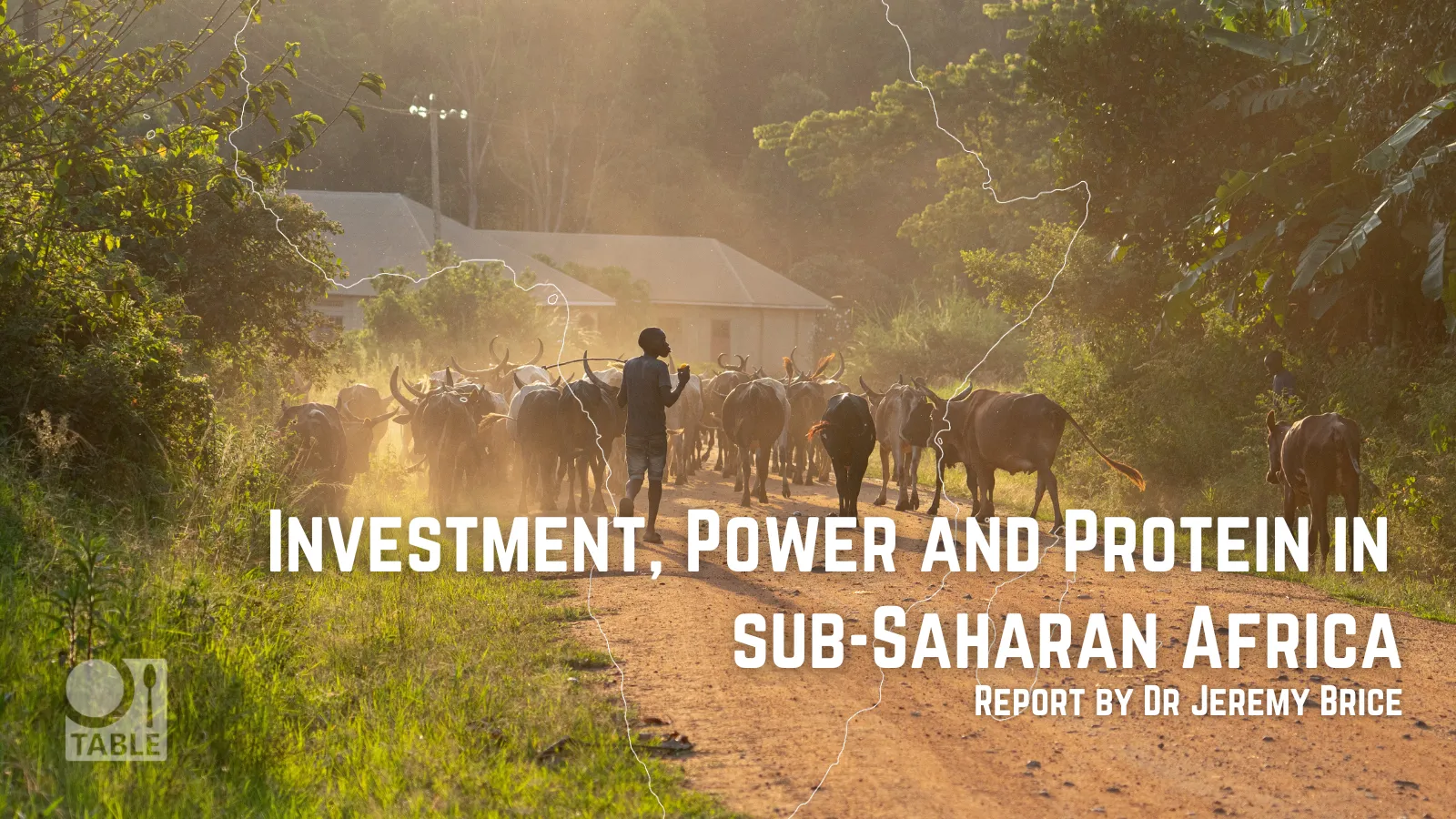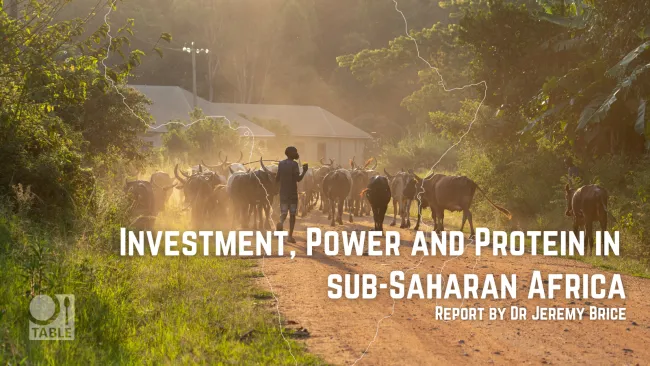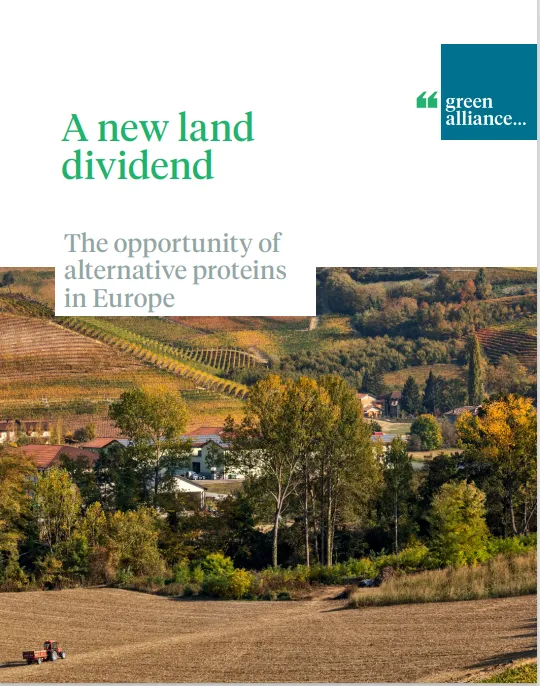This group of investors were also reluctant to finance smaller and newer African animal protein businesses. This partly reflected a mismatch in scale, with the loans and equity investments requested by newly established African food businesses often being too small for commercial banks or private equity funds to consider them an attractive investment opportunity. However, it also reflected a broader concern that newer and smaller businesses were more likely to fail and thus represented riskier investments. These investors therefore preferred to finance more established firms with strong track records of creditworthiness. They were especially attracted to multinational firms which could raise finance on international capital markets at a low cost and whose revenues from other regions could compensate for any losses incurred by their operations in sub-Saharan Africa.
As a result, commercial investors tended to finance only the largest companies operating in animal protein value chains. These included dairy processing companies, vertically integrated producers both of broiler chickens and of eggs, and established suppliers of agricultural inputs to poultry and egg producers. Several interviewees noted that this meant that few sources of finance were open to animal protein producers which had grown too large to rely upon the grants and micro-loans provided by NGOs and micro-finance institutions (MFIs) but remained too small to attract investment from commercial banks and private equity funds. These interviewees suggested that under- financing of this ‘missing middle’ of enterprises with financing needs of between roughly $50,000 and $1-2 million was constraining the development of domestic protein producers in a number of sub-Saharan African countries.
Commercial investment in protein production in sub-Saharan Africa therefore appears to be heavily focused on the production of broiler chickens and eggs – and especially of poultry feed – in Southern African countries which are perceived to be politically stable and possess established food retail and restaurant chains. In wealthier countries such as South Africa, and in countries such as Zambia where contracts are available to supply animal products to mining and oil production facilities (whose workforces often represent large concentrations of well remunerated consumers), these investors often finance vertically integrated broiler and layer chicken farms. However, some interviewees highlighted that they have recently also begun to invest in companies supplying feed and DOCs to smallholder farmers in countries such as Kenya, Uganda, Tanzania and Nigeria where demand for poultry meat and eggs is growing more rapidly. They suggested that such investments are attractive partly because these businesses have built up a proven track record of profitability. However, they are also perceived to provide a firm foundation for future expansion into vertically integrated broiler and egg production should poultry value chains begin to formalise in these countries as they have in Southern Africa.
In such settings the strategies of this group of investors resemble those of proponents of the smallholder intensification vision in viewing agricultural input suppliers as the foundation for the development of poultry and egg value chains. However, these investors differ from those adhering to the smallholder intensification vision because they do not view increasing the profitability and productivity of smallholders as the primary objective of their business. Instead, they are willing to replace the smallholder poultry producers operating within their value chains with vertically integrated production systems if this becomes commercially viable.
Some interviewees also identified dairy processing companies in East and West Africa as a secondary site of investment for this group of investors. Such firms are attractive to international investors because they may achieve considerable scale while continuing to purchase milk purchased by smallholder farmer cooperatives, and some are owned by international processors. Commercial investors largely appeared to avoid other forms of animal protein production – including aquaculture and the raising of beef cattle – on the grounds that they posed unacceptable financial risks.
How?
This group of investors’ theory of change can be summarised roughly as follows. As both populations and economies grow across sub-Saharan Africa, these investors expect its middle class – which can afford both to consume larger volumes of animal protein and to purchase food from more expensive sources such as supermarkets and restaurant chains – to expand rapidly. They believe that this will enable retail and restaurant chains to expand across sub-Saharan Africa. Such businesses will in turn create demand for high quality animal protein products which can be sold at higher and more stable prices than would be available in local informal markets and in sufficient quantities to enable producers to benefit from economies of scale.
Through investing in poultry, egg and animal feed production in sub-Saharan African countries which display rapid economic growth, high political stability, low exposure to animal protein imports and high availability of animal feed, these financial institutions aim both to enable and to profit from the expansion of the world’s fastest-growing markets for animal protein. Through investing in the expansion and formalisation of poultry, egg and animal feed production (and of dairy processing companies), they seek to increase the efficiency of these firms and the quality of their products. This, they believe, will enable their investee companies to secure a large market share, and specifically to secure contracts to supply retail and restaurant chains with animal products. In so doing, commercial investors seek both to achieve an attractive rate of return on their investments in the short term and to secure a dominant position in industries whose size and profitability is expected to grow rapidly over the coming decades.
When Two Visions Become One?
While this report presents the Smallholder Intensification and Protein for Profit visions as animating separate investor networks, the animal protein value chains associated with them do sometimes overlap. As noted above, milk processing companies financed by commercial banks are often the main customers of producer cooperatives funded by DFIs, philanthropic organisations and impact funds. Meanwhile, both groups of investors appear to be increasingly involved in financing companies which supply feed and DOCs to smallholder poultry producers (with private equity funds showing growing interest in acquiring larger firms employing this model). This raises questions about whether these investors really hold two distinct visions, or whether they simply represent different facets or stages of a single process of value chain development.
Importantly, impact funds with investments in companies supplying agricultural inputs to smallholder farmers often aimed explicitly to ‘exit’ from successful investments through selling these companies to purely commercial private equity funds. To this extent, the intended ‘end point’ of many investments made by proponents of the smallholder intensification vision appears to be the establishment of profitable companies which can be transferred to the ownership of more commercially minded investors (as suggested by Watts and Scales, 2020). A partner in one impact fund highlighted that an important element of his firm’s mission was to enable emerging local businesses to grow large enough to access commercial sources of finance:





Comments (0)